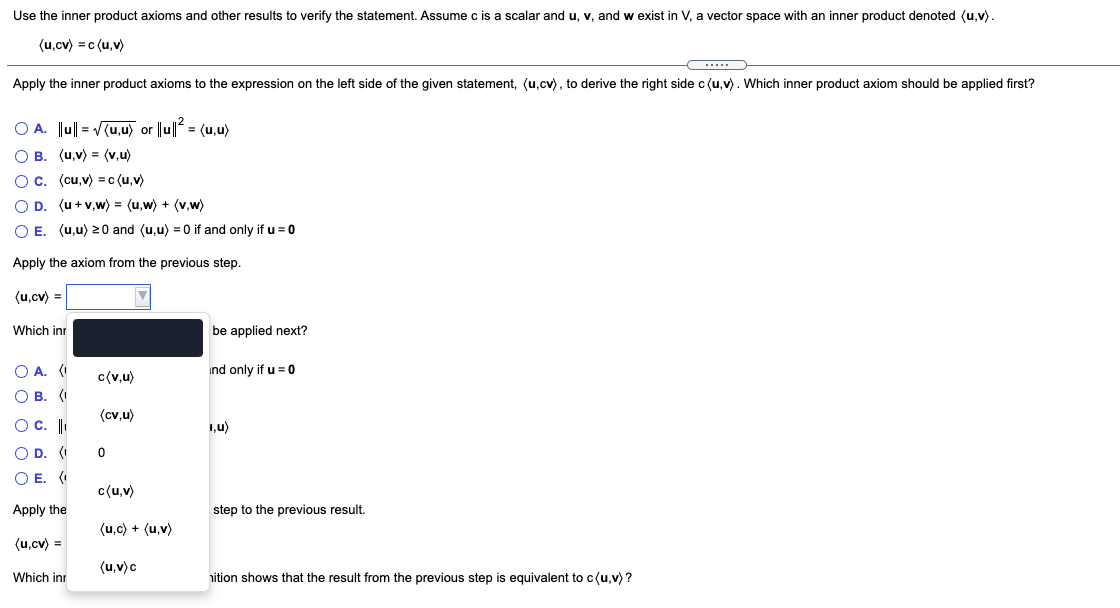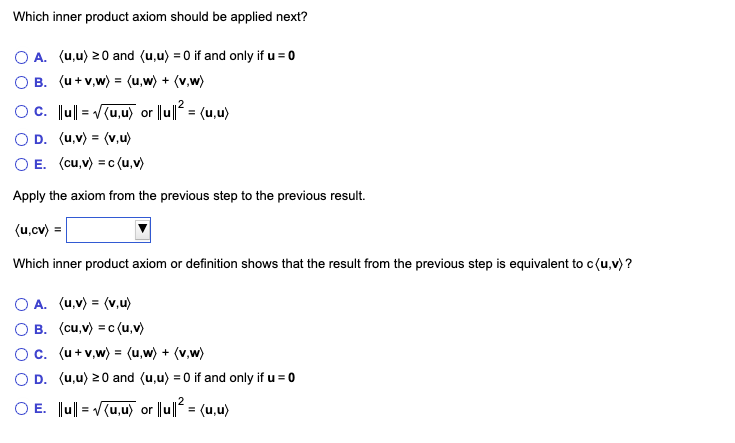
Extracted text: Use the inner product axioms and other results to verify the statement. Assume c is a scalar and u, v, and exist in V, a vector space with an inner product denoted (u,v). (u,cv) = c (u,v) Apply the inner product axioms to the expression on the left side of the given statement, (u,cv), to derive the right side c (u,v). Which inner product axiom should be applied first? O A. Ju|| = V(u,u) or ||u|| = (u,u) О в. (и,у) (v,u) O c. (cu,v) =c (u,v) OD. (u + v,w) = (u,w) + (v,w) O E. (u,u) 20 and (u,u) = 0 if and only if u = 0 Apply the axiom from the previous step. (u,cv) = Which inr be applied next? O A. (I ind only if u = 0 c(v,u) О В. ( (cv,u) O C. 1,u) O D. (I O E. ( c{u,v) Apply the step to the previous result. (u,c) + (u,v) (u.cv) = (u,v)c Which inr nition shows that the result from the previous step is equivalent to c(u,v) ?

Extracted text: Which inner product axiom should be applied next? O A. (u,u) 20 and (u,u) = 0 if and only if u = 0 O B. (u+v,w) = (u,w) + (v,w) Oc. Ju| = (u,u) or |lu|| = (u,u) O D. (u,v) = (v,u) O E. (cu,v) = c (u,v) Apply the axiom from the previous step to the previous result. (u,cv) = Which inner product axiom or definition shows that the result from the previous step is equivalent to c(u,v) ? O A. (u,v) = (v,u) B. (cu,v) = c (u,v) Oc. (u+v,w) = (u,w) + (v,w) O D. (u,u) 20 and (u,u) = 0 if and only if u = 0 O E. Ju|| = V(u,u) or ||u| = (u,u)